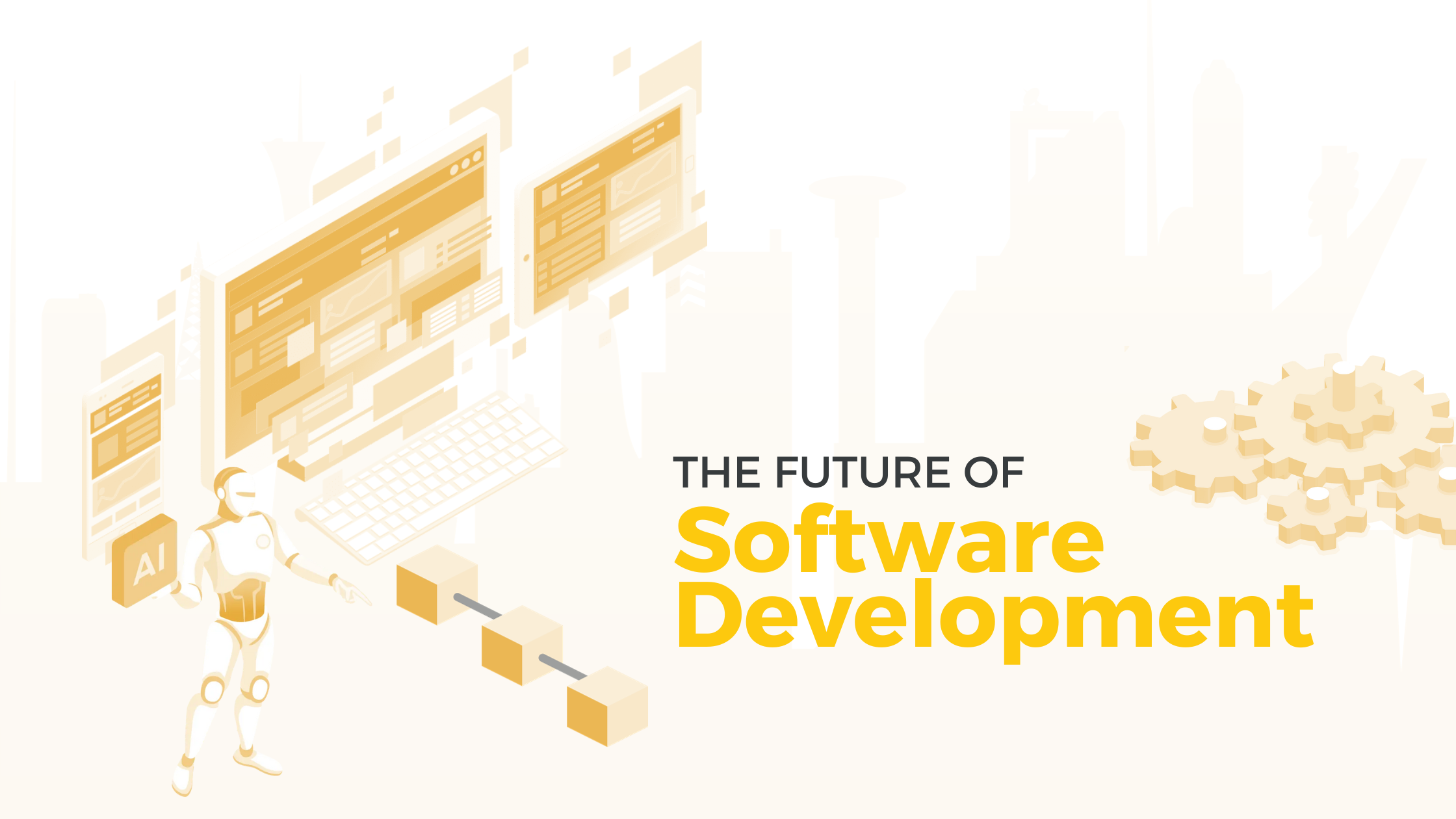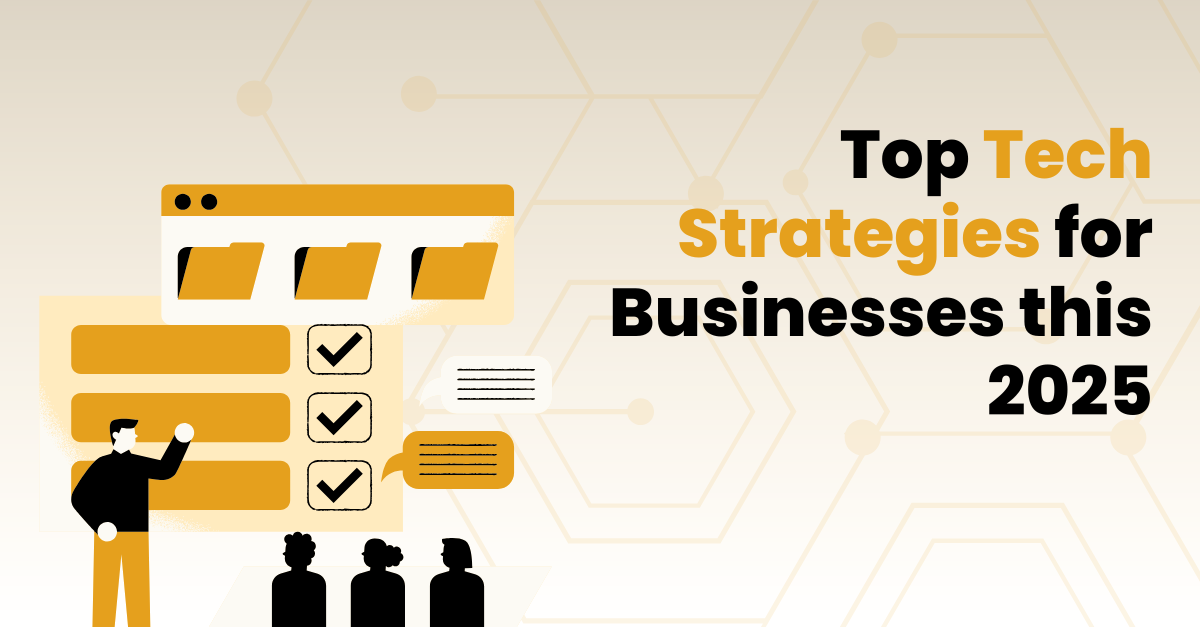The Future of Software Development
startups Entrepreneurs

As time flows, change becomes inevitable. We've transitioned from manual methods of the past to the use of advanced technology today. This shift has impacted many industries and businesses, and at the heart of this transformation is software development.
Simply put, software development is the process of creating, designing, testing, and maintaining computer programs or applications. Through various code writing methods, it empowers developers to unleash their creativity, crafting solutions that tackle emerging challenges and enhance existing processes. It played a crucial role in shaping the internet into a dynamic and interconnected space.
The development of web browsers, content management systems, and e-commerce platforms has enabled global communication, information sharing, and online commerce. It introduced automation, streamlining tasks, and boosting overall efficiency. In the business world, specifically, enterprise resource planning (ERP) systems, customer relationship management (CRM) software, and productivity tools have streamlined operations and improved decision-making processes.
While these innovations have remarkably changed the way things work, recent advancements have shown that software development can achieve even more. Today, we're witnessing the rise of powerful AI-powered apps, low-code platforms, blockchain development, and more.
Development knows no bounds. Could this be a glimpse into the future of software development? In the following sections, we'll explore just that.
AI Integration
Artificial Intelligence (AI) in software development has undergone a profound transformation over the years, progressing from simple applications to sophisticated and impactful implementations.
Before, AI's role was relatively basic, primarily utilizing rule-based systems for tasks like code completion suggestions and syntax error detection. However, these applications lacked the depth and adaptability seen in the AI tools we have today. Developers now leverage machine learning algorithms to automate repetitive tasks, allowing them to focus on more complex and creative aspects of software creation.
Collaborative coding has also experienced a revolutionary shift. In the past, collaborative coding was a manual and time-consuming process. Presently, AI has transformed collaborative coding with tools that facilitate seamless teamwork. Intelligent suggestions, version control, and code review automation contribute to smoother collaboration among developers working on the same project.
Moreover, the current use of AI in software development extends beyond mere code completion. AI-driven tools now offer predictive analysis, helping developers identify potential issues before they manifest. Optimization suggestions, based on historical data and patterns, aid in creating more efficient and high-performing software.
AI-Powered Apps
The advancements in AI today were some of the things we didn't even expect to be invented before. Get to know some startups who chose to harness the power of AI in their business:
- ServiceMob: In essence, ServiceMob is an advanced platform that harnesses the power of artificial intelligence (AI) to provide comprehensive data and analytics solutions tailored for Customer Service & Support operations in various industries. Unlike many other software options in the technology landscape, serviceMob stands out by offering end-to-end analytics for service and support processes.
- MontBlanc AI: They specialize in advanced manufacturing data analytics. MontBlanc AI's tool is powered by cutting-edge algorithms developed by experts from MIT. This platform enables users to evaluate data, identify anomalies, perform condition monitoring, and analyze machine manufacturing data in real time. Thus, it ensures that users have the right information precisely when and where they need it, unlocking the full potential of factory operations.
- TechNext: TechNext is a company that employs search algorithms and machine learning to identify, predict, and assess investment opportunities in emerging technologies. Their focus extends to various sectors, including aerospace, automotive, energy, and venture capital. Through advanced technology and data analysis, it aims to navigate and uncover promising prospects that can transform the way businesses approach decision-making.
- FaceApp: As an AI-powered mobile application, it gained popularity for its facial transformation capabilities. It utilizes neural networks and deep learning algorithms to apply various filters and effects to facial images. FaceApp can age or de-age faces, change facial expressions, and apply artistic filters, demonstrating the application of AI in image processing and facial recognition technologies.
These represent just a few examples of popular businesses harnessing the power of AI or integrating AI capabilities. However, numerous companies, including heavyweights like Netflix, Google, LinkedIn, Spotify, Apple, and others, have developed their bespoke AI-integrated software solutions. These applications play a pivotal role in optimizing various facets of their business operations.
Blockchain and Decentralized Apps (DApps)
Blockchain, essentially a decentralized and distributed ledger, brings enhanced security, transparency, and trust to transactions. In the context of software development, it introduces new paradigms and opportunities.
Blockchain's impact on software development is profound, particularly in enhancing the security and transparency of transactions. The decentralized nature of blockchain eliminates the need for intermediaries, reducing the risk of data manipulation and unauthorized access. This not only fortifies data integrity but also aligns with the growing demand for privacy and security in the digital landscape.
On the other hand, DApps represents a paradigm shift from traditional, centrally controlled applications. These applications run on a decentralized network of computers, typically utilizing blockchain technology. The core principle behind DApps is to eliminate single points of failure and central control, fostering a more democratic and resilient digital ecosystem.
The potential disruptions caused by DApps extend beyond conventional software paradigms. They introduce a new era of user-centric applications, where individuals have greater control over their data and interactions. Smart contracts, a key feature of DApps, enable self-executing agreements without the need for intermediaries, further streamlining processes.
Simply put, blockchain and DApps offer not only technological advancements but also a shift in the philosophy of software development.
Low-Code or No-Code Development
If it seems unfamiliar, Low-Code refers to a visual approach to software development, leveraging a graphical interface and drag-and-drop functionality. This method minimizes the need for intricate coding, allowing users to design, prototype, and deploy applications swiftly. On the other hand, No-Code takes this concept further, eliminating the necessity for coding skills.
These platforms empower users, even those without a coding background, to create functional and scalable software solutions.
The growing popularity of LC/NC platforms can be attributed to several factors:
-
- First, they significantly reduce the time and resources required for application development. By streamlining the process, organizations can accelerate their time-to-market, fostering agility and responsiveness.
- Second, LC/NC platforms foster collaboration between developers and non-developers, breaking down silos and promoting cross-functional teamwork.
- Lastly, they address the shortage of skilled developers by enabling a broader audience to participate in the software creation process.
One prominent example of this is the platform called OutSystems. It's a comprehensive application development platform that empowers organizations to create, deploy, and manage applications with minimal coding requirements.
Here's how it exemplifies the principles of LC/NC development:
- Visual Development Interface: OutSystems employs a visual interface for application development, allowing users to design with drag-and-drop components.
- Pre-Built Templates and Components: A library of pre-built templates and components accelerates development, reducing the need for coding from scratch.
- Collaborative Development: Facilitating collaboration, OutSystems serves as a common platform for technical and non-technical team members to work together effectively.
- Accelerated Prototyping and Deployment: The platform's visual approach expedites prototyping and deployment, enabling quick iterations and a more agile development process.
Investing for the Future: Where to Begin?
As time moves forward, things around us keep changing. Imagine a future where iPhones might not be the latest, and even AIs could be replaced by something better. Sounds unbelievable, right? But with the way people keep coming up with new ideas, these things might not be impossible.
Yet, amid all this progress, figuring out what will truly last is not easy. What's important to understand is that success isn't just about using the newest technologies. It's about making these technologies work well, be easy for people to use, and be able to adapt to different situations.
Think about how AI is changing the way we write code, how Blockchain is creating a new way of doing things, and how anyone can now create software without being an expert through easy-to-use tools. These bring both challenges and chances for success. So, it's not just about starting the journey—it's about embracing the possibilities that the future will bring.
While it's a good thing to invest in the future trends we've discussed here, it's best to always keep being curious, make smart choices, and always be ready for the next big thing.
Subscribe to our newsletter & stay updated.
.png)

.png)